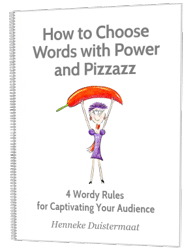Sensory language spices up your writing and allows readers to experience your words as if they’re living your story. You can use sensory words in any type of writing, including business writing.
How to use sensory details
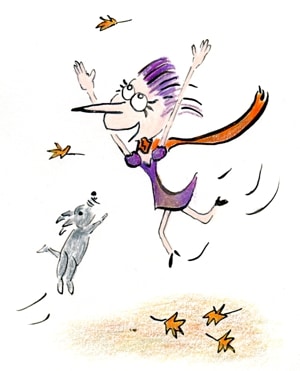
A thumping headache.
Does it ever happen to you?
You should work, but you can’t. You don’t want to deal with your to-do list, an overflowing inbox, an incessant stream of tweets.
You find your walking boots and get out.
The smell of rain lingers in the air. A gentle breeze soothes your aching head. You watch the sun rays play with the golden leaves.
Can you picture the scene?
That’s because of the sensory details
You might think that sensory words are for poets and novelists. For creative spirits. Not for serious business people like you and me.
But that’s not true.
Using sensory language can help you captivate your audience—a business audience, too. Sensory language helps readers experience your words, almost as if they’re present, right in the middle of your story. What’s more, sensory details add personality and flavor to boring content, helping you stand out in a sea of grey voices that all sound the same.
Shall I explain?
The science behind sensory words
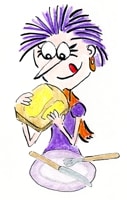
When reading non-sensory words, your brain processes text. But when you read sensory words different areas of your brain light up. Your brain processes sensory words as if you taste a sweet cake, as if you see a dazzling display of colors, as if you feel a rough texture.
And we also know from research that when we can hold a product the desire for the product increases. Might we be able to increase desire simply by using sensory words so people can imagine holding our products?
Sensory words can even boost sales. Research into menus suggests that describing dishes using sensory words makes more people buy them.
So, sensory words are truly magic.
What are sensory words?
Sensory words are descriptive—they describe how we experience the world: how we smell, see, hear, feel or taste something.
- Words related to sight indicate colors, shape, or appearance. For instance: gloomy, dazzling, bright, foggy, gigantic.
- Words related to touch describe textures. You can use them to describe feelings and abstract concepts, too: gritty, creepy, slimy, fluff, sticky.
- Words related to hearing describe sounds. For instance: crashing, thumping, piercing, tingling, squeaky. Often these words mimic sounds—that’s when they’re called onomatopoeic.
- Taste and smell are closely related. Most taste and smell words are easy substitutes for bland words like good, nice, or bad. For instance: zesty, tantalizing, sweet, stinky, stale.
- Motion is sensory, too. By using active words or describing movement, you help your readers experience your words. For instance: vibrating, soaring, mind-boggling, staggering, bumpy.
You can create a multi-sensory experience in your writing. Here’s an example from Benjamin Myers’ book The Offing:
Sitting here now by the open window, a glissando of birdsong on the very lightest of breezes that carries with it the scent of a final incoming summer, I cling to poetry as I cling to life.
Within one sentence Myers shares a visual detail (the open window), an auditory detail (a glissando of birdsong), a sense of motion and touch (the lightest breeze), and a sense of smell (the scent of the incoming summer).
But sensory words are not just for novels …
Example sentences: How to appeal to the senses in business writing
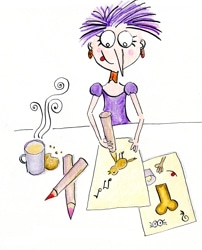
We can add a touch of poetry by using one or two sensory words—to make our writing more vivid and to shape a stronger writing voice.
You can find opportunities to use sensory words almost everywhere—in headlines and email subject lines, on your About page, in product descriptions, business emails, or e-newsletters.
For instance:
A headline without sensory words:
5 Tips for Turning Boring Information Into a Practical Tutorial
With sensory words:
5 Tips for Turning Drab Information Into a Tantalizing Tutorial
A business email without sensory words:
Unfortunately, I’m currently too busy to take on new projects.
With sensory words:
Unfortunately, my schedule is jam-packed; and I’m unable to squeeze in new projects.
A product description without sensory words:
These long-lasting cabinets are made from the best material, guaranteed for 10 years.
With sensory words:
These cabinets remain squeak-and-creak free. That’s guaranteed for 10 years.
A bio without sensory words:
Irreverent copywriter on a mission to eradicate gobbledygook and to make boring business blogs interesting.
With sensory words:
Irreverent copywriter on a mission to stamp out gobbledygook and to add sparkle to business blogs.
A sentence without sensory words from a blog opening:
Imagine your writing is slowing readers down.
With sensory words:
Imagine your readers trudging. Their shoes feel heavy. Squelch. Sploosh. Squelch. Sploosh.
Sensory details inject a dose of personality into your writing. They make your writing stand out, and help readers picture the scenes you’re describing.
Sensory words for emotions
Emotions can often be expressed with sensory words.
For instance, you can use the word prickly (tactile) to describe feeling irritated. And when you’re calm, you’re cool-headed (also tactile). When you’re energetic, you’re buzzing (auditory) or bouncing (motion). You can feel bitter (taste). You can be bright or gloomy (visual).
To find a sensory word for an emotion, think about the sensation that that emotion causes in your body. When you’re nervous you become jittery or jumpy. When you’re angry, your body temperature rises, so you feel fiery or hot-headed.
Amplify your words with sound symbolism
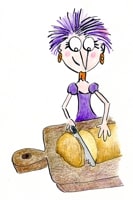
You may have heard of onomatopoeic words?
Onomatopoeic words express a sound such as to squeal, whoosh, or boom!
But there’s a different, more subtle category of words. Words with sound symbolism are associated with a specific sensory experience. For his master’s thesis, James Harbreck studied such words and found that their usage has been increasing over the last two centuries.
Harbreck mentions examples like:
- Words starting with gl– are associated with light, such as glint or glimmer
- Words ending with –irl or –url often relate to circular or spiral motion or shape such as curl, swirl, whirl, or twirl
- Words ending with –ump tend to be associated with roundness or heaviness, such as lump, clump, hump, or rump
According to Harbreck, words with sound symbolism (more here) are used more regularly in fiction than non-fiction.
But we can change that.
We can use such words to make our writing glitter and glow more brightly.
The truth about captivating your audience
You can use the same words every business writer uses.
It’s a quick way to write a lot of text. But you sound the same as everyone else, and the noisy internet machine drowns out your words. Your message gets lost.
So, try to release your inner poet and pick your words with care and precision.
Make your readers crave your next article.
Get them to fall in love with your writing, and get them to fall in love with your voice.
A list of 75 sensory phrases
 Sensory language #1: Visual words
Sensory language #1: Visual words
Sensory words for sight allow you to paint vibrant (or gloomy) pictures.
What are you seeing? What’s the size? What’s the light like? What are the colors?
Examples of visual words:
Gigantic
Teeny-tiny
Bulky
Glitter
Sparkling
Shimmering
Shiny
Glowing
Crooked
Hazy
Shadowy
Gloomy
Drab
Murky
Dull
Knotty
Vibrant
 Sensory language #2: Tactile words
Sensory language #2: Tactile words
Sensory words for touch allow readers to sense the silky-smoothness of your words.
How does something feel when you touch it? What’s the texture? The temperature? How does the humidity or pressure of the air feel?
Examples of tactile words:
Fluffy
Gritty
Rough
Smooth
Slimy
Sticky
Creepy
Crisp
Hairy
Chilled
To stifle
Woolly
Crisp
 Sensory language #3: Auditory words
Sensory language #3: Auditory words
Sensory words for hearing allow readers to hear what’s happening.
How does someone’s voice sound? What kind of sounds are made? Is it loud or soft?
Examples of auditory words:
Buzz
Hubbub
Humming
Faint
Deafening
Squeaky
Earsplitting
Serene
To sizzle
To hiss
To shriek
Snappy
Boom!
Roaring
Thundering
Crunchy
 Sensory language #4: Words related to taste and smell
Sensory language #4: Words related to taste and smell
Sensory words for taste and smell help you turn a bland text into lip-smackingly tasty writing.
What kind of aroma is there? Is it natural or artificial? Strong or subtle? Pleasant or repulsive? And does something taste sweet, sour, savory, salty, or bitter?
Examples of words related to taste and smell:
Bland
Rotten
Fragrant
Stale
Juicy
Stinky
Gooey
Bitter
Yummy
Lip-smackingly
Pungent
Zesty
Sweet
Spice
 Sensory language #5: Motion words
Sensory language #5: Motion words
When you use strong verbs to describe motion, readers experience the motion as if they’re there, too.
Is the car swerving? Is the flight turbulent? Is the sea choppy?
Examples of motion words:
Soaring
To resonate
To breeze through
Staggering
Blown away
Paralyzed
Eye-popping
Gobsmacked
Shocking
To grab
Jaw-droppingly good
Turbulent
Choppy
Swirling
To wriggle
6 books that showcase sensory writing
The books listed below showcase sensory writing.
When you see how others use sensory details in their writing, it becomes easier to appeal to the senses in your own writing, too.
To accelerate the learning process, pay attention to imagery in the text. How do the authors help you imagine the scenes they describe? Which smells, feelings, tastes, sounds, motions, and sights do they refer to? Which words do they use to describe those sensory experiences? Which words do you like best? Add your favorite sensory words to a list and see whether you can include them in your own writing.
You can learn from any type of writing. If you’re writing about business, you can learn from fiction or science writing, too.
The links below are affiliate links. If possible, please support your local bookstore.
1. A sensory novel
Elif Shafak excels at sketching multi-sensory images to transport her readers to a different world. Here’s an example:
The brothel where Leila worked was among the oldest in the area. A single fluorescent tube flickered at the entrance with the force of a thousand tiny matches catching light and burning one after another. The air was thickened by the scent of cheap perfume, the taps encrusted with deposits of limescale and the ceiling coated with the sticky brown stains of nicotine and tar from years of tobacco smoke.
From: 10 Minutes 38 Seconds in this Strange World by Elif Shafak
2. A sensory business book
Chip and Dan Heath are my favorite business writers. In their book The Power of Moments, they show how to weave miniature stories into your writing—even a business book.
The Power of Moments explains why certain customer service experiences have extraordinary impact. Here’s an example of their writing:
Let’s start with the cherry-red phone mounted to a wall near the pool. You pick it up and someone answers, “Hello, Popsicle Hotline.” You place an order, and minutes later, a staffer wearing white gloves deliver your cherry, orange, or grape Popsicles to you at poolside. On a silver tray. For free.
From: The Power of Moments by Chip Heath and Dan Heath
3. A science book that appeals to the senses
In his book The Eloquence of the Sardine, Bill François uses vivid imagery to show us what it’s like to be a fish. Here’s a snippet:
Some fish emit sounds through their swim bladders, pouches of gas located in their abdomens that keep them neutrally buoyant. They use these swim bladders as a drum, like children who tap out rhythms on their bellies after eating, an unaccountable music we’ve all made at one time or another. Patting their bellies like this, with the help of special stomach muscles, drum fish croak, groupers grunt and gurnards rumble. Their sounds are reminiscent of foghorns, drum solos or TV game-show buzzers.
From: The Eloquence of the Sardine: The Secret Life of Fish & Other Underwater Mysteries by Bill François, translated by Antony Shugaar
4. A nature book full of sensory language
Braiding Sweetgrass by botanist Robin Wall Kimmerer mixes Native American wisdom with western science, plus lots of sensory descriptions of nature. Here’s a sample:
You could smell ripe strawberries before you saw them, the fragrance mingling with the smell of sun on damp ground. It was the smell of June, the last day of school, when we were set free, and the Strawberry Moon, ode’mini-giizis. I’d lie on my stomach in my favorite patches, watching the berries grow sweeter and bigger under the leaves. Each tiny wild berry was scarcely bigger than a raindrop, dimpled with seeds under the cap of leaves. From that vantage point I could pick only the reddest of the red, leaving the pink ones for tomorrow.
From: Braiding Sweetgrass by Robin Wall Kimmerer.
5. A food memoir
As Nina Mingya Powles shows in her book Tiny Moons: A Year of Eating in Shanghai, food writing isn’t just about describing taste and smell.
Here’s a tiny taster:
I eat my guotie right there, standing beneath the fluorescent lights. First the crunch, then hot soup scalds my tongue – I wasn’t expecting so much soup – then gingery, garlicky pork in the middle.
From: Tiny Moons: A Year of Eating in Shanghai by Nina Mingya Powles
6. A guidebook to smell
In her book Revelations in Air, Jude Stewart describes a variety of aromas, the stories behind them and the memories that smells can evoke.
For instance, here’s how Stewart describes the smell of oranges:
They smell sparkling, clean, literally zesty. Oranges invigorate the nose with a bright acidic tang, over which plays a light, balanced sweetness. It’s affable and domestic, a lunchtime smell.
From: Revelations in Air by Jude Stewart
FREE 22-page ebook
How to Choose Words With Power and Pizzazz
- Discover 4 wordy rules for captivating your audience
- Learn how to fortify and energize your message
- Get examples that show you how to spice up your writing
Get My Free Ebook >>
Contents
- 1 What are sensory words examples?
- 2 What are the 5 sensory words?
- 3 What are sensory words in writing?
- 4 What are sensory words for smell?
- 5 How do you write a sensory description?
- 6 How are sensory words used in writing?
- 7 How do blood smell like?
- 8 How do you teach sensory writing?
- 9 How do you write sensory language?
- 10 What is sensory images and examples?
- 11 Is cozy a sensory word?
- 12 What does sensory language mean?
- 13 What are some examples of the five senses?
- 14 How are five senses used in an essay?
- 15 What is an example of a sensory experience?
- 16 What does sensory mean in child development?
- 17 How do you write five senses examples?
- 18 How do you write sense?
- 19 What are the 5 senses in English?
- 20 How do you describe your sense of touch?
- 21 What activity uses all 5 senses?
- 22 What are the 33 senses?
What are sensory words examples?
Sensory words are descriptive—they describe how we experience the world: how we smell, see, hear, feel or taste something. Words related to sight indicate colors, shape, or appearance. For instance: gloomy, dazzling, bright, foggy, gigantic. Words related to touch describe textures.
Sensory details appeal to the five senses: sight, sound, smell , touch, taste. When writing a personal narrative, your objective is to get the reader to feel like they are there with you.
What are sensory words in writing?
Sensory words use all five senses. They include sight, touch, smell, hearing, and feeling. Using sensory words increases your ability to write in details. … The device uses details to keep your readers interest and engaged in writing.
What are sensory words for smell?
What are sensory words for smell?
- anosmic – odourless, no smell at all.
- antiseptic – clean or pure smell that is bland an characterless.
- aroma – a smell that is strong but pleasant.
- comforting – pleasant aroma.
- delicate – subtle, faint, smell that is not overpowering.
How do you write a sensory description?
Let’s write a description with sensory details using “Porkistan” by Syed Ali Haider as a model:
- Identify the thing to describe. Keep it simple. …
- State what the thing does. Sometimes it’s not necessary to compare the smell or taste to something else. …
- Describe the thing with a few senses. …
- Connect the senses to story.
How are sensory words used in writing?
Sensory details are words that stir any of the five senses: touch, taste, sound, smell, and sight. For example, rather than saying “She drank the lemonade,” say: “She felt her tongue tingle as she sipped the frosty glass of tart, sugary lemonade.”
How do blood smell like?
Human blood, which also contains water and iron, has a smell similar to rust. This is an olfactory illusion. Smell a dry metal paper clip.
How do you teach sensory writing?
Ask students to tell you descriptive details of a place they would all be familiar with (such as the cafeteria, a park in the neighborhood). Explain that students will need details listed under each sense. Once there are enough details under each of the five senses, tell students they just provided sensory details.
How do you write sensory language?
When using sensory details in descriptive writing, the writer must engage in any or a combination of the five senses: see, hear, taste, touch, and smell.
What is sensory images and examples?
It is when a reader combines their schema and the information in the text to create an image in their mind. This image can represent all of the five senses (visual, smell, taste, sound, touch or feeling). … When readers make sensory images as they read, it helps them understand and enjoy the story more.
Is cozy a sensory word?
Adjectives used as sensory words to describe a house, for example, might include towering, menacing, sterile, dilapidated or cozy. … Adverbs, which modify verbs, can also qualify as sensory words.
What does sensory language mean?
Sensory language refers to the use of words to create a connection to any of the five senses. In literature, sensory writing is used to provide the reader with a vivid image or description of something. … This is exactly why writers use sensory language. It helps us to connect to an image, description, action or scene.
What are some examples of the five senses?
What are Your Five Senses?
- Ears (hearing)
- Skin and hair (touch)
- Eyes (sight)
- Tongue (taste)
- Nose (smell)
How are five senses used in an essay?
Using The Five Senses In Writing – FAQs
Incorporating the senses into your writing is simple. First, focus on what your characters can see in the scene. Then, one by one, think about what they can hear, smell, feel and taste. Assort your various descriptions and pick out your most powerful few.
What is an example of a sensory experience?
Some of the best things about being alive are the taste of delicious food, the sound of a loved one’s voice, and the feeling of wind blowing through your hair. What do these things have in common? They’re all examples of sensory experiences that bring forth fond memories and joy.
What does sensory mean in child development?
So, what is sensory play? Sensory play includes any activity that stimulates your young child’s senses: touch, smell, taste, movement, balance, sight and hearing. Sensory activities facilitate exploration and naturally encourage children to use scientific processes while they play, create, investigate and explore.
How do you write five senses examples?
How do you write sense?
Tips to Use Your Five Senses When Writing
- Sight. The most often used sense when writing is sight. …
- Hearing. Loud, soft, yell, whisper, angry, and all kinds of other adjectives are used for sound. …
- Smell. Smell is another one of those senses that’s different for each of us. …
- Touch. …
- Taste. …
- Resources.
What are the 5 senses in English?
Senses allow us to observe and understand the world around us. There are five main ways we can do this: through sight (with our eyes), touch (with our fingers), smell (with our nose), taste (with our tongue) and hearing (with our ears).
How do you describe your sense of touch?
Touch consists of several distinct sensations communicated to the brain through specialized neurons in the skin. Pressure, temperature, light touch, vibration, pain and other sensations are all part of the touch sense and are all attributed to different receptors in the skin.
What activity uses all 5 senses?
Originally Answered: What is an activity or action that we as humans use all of our five senses (touch, smell, taste, hear, see)? Eating. You see and smell the food, then you touch it (at least with your mouth) and taste it, while hearing everything from “crunch” to “slosh”.
What are the 33 senses?
How many senses do we have?
- Sight or vision.
- Hearing or audition.
- Smell or olfaction.
- Taste or gustation.
- Touch or tactition.
It’s almost too easy.
By using sensory words to evoke the sense of sight, sound, touch, taste, or smell; smart and attractive writers just like you are able to make their words burst to life in their reader’s mind.
In this post, you’ll learn:
- The science behind sensory details (e.g. why sensory images and words are so persuasive);
- The definition of sensory details (plus examples);
- How answering five simple questions will help you write descriptive details that pack your content with sensory language;
- 500+ sensory words you can incorporate into your own vocabulary and writing (right now).
Let’s dive in.
Free Bonus:
Click here
to get all 583 sensory words delivered to your inbox (for free).
The Colossal Power of Sensory Details
Remember the final scene in Field of Dreams when Ray Kinsella has a catch with his dad?
You can smell the grass on the field.
You can hear the sound of the baseball hitting their gloves.
And you can feel Ray’s years of guilt melting away as he closes his eyes, smiles, and tosses the ball back to his dad.
(Be honest. You’re crying right now, aren’t you?)
Field of Dreams made you feel like you were in Ray’s shoes, on his field, playing catch with dad.
The scene creates such a vivid sensory experience for many viewers that whenever they think of playing catch, this scene will come up alongside their own childhood memories.
Here’s why:
When you paint a strong scene in your reader’s imagination, you make it easier for them to pull it back up from their memory. You’ve essentially bookmarked it for them so they can easily find it when something — a sight, a smell, a sound — reminds them of it.
That’s the power of content that incorporates sensory details.
And this power isn’t limited to cinema classics capable of making grown men cry. For centuries, literary giants have been packing their prose and poetry with power words that evoke the senses:
“Cry ‘Havoc,’ and let slip the dogs of war;
That this foul deed shall smell above the earth
With carrion men, groaning for burial”
— William Shakespeare (circa 1599)
In addition to The Bard, authors like Maya Angelou, Edgar Allan Poe, and Charles Dickens excel at sensory writing. So do literally every famous poet you learned about in school.
And that begs the obvious question…
Why are Sensory Details so Effective?
Short answer:
The brains of human beings handle sensory words differently than ordinary words.
In a 2011 study published in The Quarterly Journal of Experimental Psychology, experts found that our brains process “tangible” (i.e. sensory) words faster than other words.
And in a study published for Brain and Language in 2012, psychologists found that a certain part of our brain is “activated” when we read sensory words.
In other words:
So, we know why sensory details are powerful. And we know writers have been tapping into their power for a long, long time.
Now let’s define them and go over a few sensory language examples:
What are Sensory Details?
Sensory details are descriptive words that appeal to the 5 physical senses. Using sensory imagery, they describe how we see, hear, touch, taste, and smell the world around us.
And, although sensory details are often adjectives, they can also take the form of verbs and adverbs.
Let’s break each one down:
1. Sight Sensory Words
Sight words are related to vision and describe the appearance of something (its color, size, shape, and so on).
Sight word examples:
- Her golden hair looked disheveled thanks to the gust of wind.
- He was a towering presence.
- I ordered a large orange juice, but the waiter brought me a teeny-tiny glass the size of a thimble.
Click here to see all 185 sight sensory words
- Angular
- Azure
- Billowy
- Black
- Bleary
- Bloated
- Blonde
- Blue
- Blurred
- Blushing
- Branching
- Bright
- Brilliant
- Broad
- Brown
- Brunette
- Bulbous
- Bulky
- Camouflaged
- Chubby
- Circular
- Colorful
- Colorless
- Colossal
- Contoured
- Cosmic
- Craggy
- Crimson
- Crinkled
- Crooked
- Crowded
- Crystalline
- Curved
- Dark
- Dazzling
- Deep
- Dim
- Dingy
- Disheveled
- Distinct
- Drab
- Dreary
- Dull
- Dusty
- Elegant
- Enchanting
- Engaging
- Enormous
- Faded
- Fancy
- Fat
- Filthy
- Flashy
- Flat
- Flickering
- Foggy
- Forked
- Freckled
- Fuzzy
- Gargantuan
- Gaudy
- Gigantic
- Ginormous
- Glamorous
- Gleaming
- Glimpse
- Glistening
- Glitter
- Glittering
- Globular
- Gloomy
- Glossy
- Glowing
- Gold
- Graceful
- Gray
- Green
- Grotesque
- Hazy
- Hollow
- Homely
- Huge
- Illuminated
- Immense
- Indistinct
- Ivory
- Knotty
- Lacy
- Lanky
- Large
- Lavender
- Lean
- Lithe
- Little
- Lofty
- Long
- Low
- Malnourished
- Maroon
- Massive
- Miniature
- Misshapen
- Misty
- Motionless
- Mottled
- Mountainous
- Muddy
- Murky
- Narrow
- Obtuse
- Olive
- Opaque
- Orange
- Oval
- Pale
- Peered
- Petite
- Pink
- Portly
- Pristine
- Prodigious
- Purple
- Quaint
- Radiant
- Rectangular
- Red
- Reddish
- Rippling
- Rotund
- Round
- Ruby
- Ruddy
- Rusty
- Sabotaged
- Shadowy
- Shallow
- Shapeless
- Sheer
- Shimmering
- Shiny
- Short
- Silver
- Skinny
- Small
- Smudged
- Soaring
- Sparkling
- Sparkly
- Spherical
- Spotless
- Spotted
- Square
- Steep
- Stormy
- Straight
- Strange
- Striped
- Sunny
- Swooping
- Tall
- Tapering
- Tarnished
- Teeny-tiny
- Tiny
- Towering
- Translucent
- Transparent
- Triangular
- Turquoise
- Twinkling
- Twisted
- Ugly
- Unsightly
- Unusual
- Vibrant
- Vivid
- Weird
- White
- Wide
- Wiry
- Wispy
- Wizened
- Wrinkled
- Wrinkly
- Yellow
2. Sound Sensory Words
Words related to hearing often describe the sound they make (known as onomatopoeia), but this isn’t always the case.
Examples of hearing words:
- He had a big, booming voice.
- The sound of screeching tires was soon followed by the deafening sound of a car horn.
- As I peeked under the bed, the cackling laughter coming from the closet made the hairs on my arms stand up.
Click here to see all 161 sound sensory words
- Babble
- Bang
- Barking
- Bawled
- Bawling
- Bellow
- Blare
- Blaring
- Bleat
- Boom
- Booming
- Bray
- Buzz
- Buzzing
- Cackle
- Cackling
- Chatter
- Chattering
- Cheer
- Chiming
- Chirping
- Chuckle
- Clamor
- Clang
- Clanging
- Clap
- Clapping
- Clicking
- Clink
- Clinking
- Cooing
- Coughing
- Crackle
- Crackling
- Crashing
- Creak
- Croaking
- Crow
- Crunch
- Crunching
- Crunchy
- Cry
- Crying
- Deafening
- Distorted
- Dripping
- Ear-piercing
- Earsplitting
- Exploding
- Faint
- Fizzing
- Gagging
- Gasping
- Giggle
- Giggling
- Grate
- Grating
- Growl
- Grumble
- Grunt
- Grunting
- Guffaw
- Gurgle
- Gurgling
- Hanging
- Hiss
- Hissing
- Honking
- Howl
- Hubbub
- Hum
- Humming
- Hush
- Jabber
- Jangle
- Jangling
- Laughing
- Moaning
- Monotonous
- Mooing
- Muffled
- Mumble
- Mumbling
- Murmur
- Mutter
- Muttering
- Noisy
- Peeping
- Piercing
- Ping
- Pinging
- Plopping
- Pop
- Purring
- Quacking
- Quiet
- Rant
- Rapping
- Rasping
- Raucous
- Rave
- Ringing
- Roar
- Roaring
- Rumble
- Rumbling
- Rustle
- Rustling
- Scratching
- Scream
- Screaming
- Screech
- Screeching
- Serene
- Shout
- Shouting
- Shrieking
- Shrill
- Sigh
- Silent
- Sing
- Singing
- Sizzling
- Slam
- Slamming
- Snap
- Snappy
- Snoring
- Snort
- Splashing
- Squawking
- Squeaky
- Stammer
- Stomp
- Storm
- Stuttering
- Tearing
- Thudding
- Thump
- Thumping
- Thunder
- Thundering
- Ticking
- Tingling
- Tinkling
- Twittering
- Wail
- Warbling
- Wheezing
- Whimper
- Whimpering
- Whine
- Whining
- Whir
- Whisper
- Whispering
- Whistle
- Whooping
- Yell
- Yelp
3. Touch Sensory Words
Touch words describe the texture of how something feels. They can also describe emotional feelings.
Examples of touch words:
- Two minutes into the interview, I knew his abrasive personality would be an issue if we hired him.
- With a forced smile, I put on the itchy Christmas sweater my grandmother bought me.
- The Hot Pocket was scalding on the outside, but ice-cold in the middle.
Click here to see all 123 touch sensory words
- Abrasive
- Balmy
- Biting
- Boiling
- Breezy
- Bristly
- Bubbly
- Bubby
- Bumpy
- Burning
- Bushy
- Chilled
- Chilly
- Clammy
- Coarse
- Cold
- Cool
- Cottony
- Crawly
- Creepy
- Cuddly
- Cushioned
- Damp
- Dank
- Dirty
- Downy
- Drenched
- Dry
- Elastic
- Feathery
- Feverish
- Fine
- Fleshy
- Fluff
- Fluffy
- Foamy
- Fragile
- Freezing
- Furry
- Glassy
- Gluey
- Gooey
- Grainy
- Greasy
- Gritty
- Gushy
- Hairy
- Heavy
- Hot
- Humid
- Ice-Cold
- Icy
- Itchy
- Knobbed
- Leathery
- Light
- Lightweight
- Limp
- Lukewarm
- Lumpy
- Matted
- Metallic
- Moist
- Mushy
- Numbing
- Oily
- Plastic
- Pointed
- Powdery
- Pulpy
- Rocky
- Rough
- Rubbery
- Sandy
- Scalding
- Scorching
- Scratchy
- Scummy
- Serrated
- Shaggy
- Sharp
- Shivering
- Shivery
- Silky
- Slimy
- Slippery
- Sloppy
- Smooth
- Smothering
- Soapy
- Soft
- Sopping
- Soupy
- Splintery
- Spongy
- Springy
- Sputter
- Squashy
- Squeal
- Squishy
- Steamy
- Steely
- Sticky
- Stifled
- Stifling
- Stinging
- Stony
- Stubby
- Tangled
- Tapered
- Tender
- Tepid
- Thick
- Thin
- Thorny
- Tickling
- Tough
- Unsanitary
- Velvety
- Warm
- Waxy
- Wet
- Woolly
4. Taste Sensory Words
Taste words are interesting. Though they can describe food, and tease your taste buds with their deliciousness, they’re often used in comparisons and metaphors.
Examples of taste words:
- It’s a bittersweet situation.
- Her zesty personality caught Karl’s eye.
- The scrumptious jalapeno poppers comforted Karl after his bitter rejection.
Click here to see all 51 taste sensory words
- Acidic
- Appetizing
- Bitter
- Bittersweet
- Bland
- Buttery
- Charred
- Contaminated
- Creamy
- Crispy
- Delectable
- Delicious
- Doughy
- Earthy
- Fermented
- Flavorful
- Flavorless
- Floury
- Garlicky
- Gingery
- Gritty
- Hearty
- Juicy
- Luscious
- Medicinal
- Mellow
- Melted
- Nauseating
- Nutritious
- Nutty
- Palatable
- Peppery
- Pickled
- Piquant
- Raw
- Refreshing
- Rich
- Ripe
- Salted
- Savory
- Scrumptious
- Stale
- Sugary
- Syrupy
- Tangy
- Tart
- Tasteless
- Unripe
- Vinegary
- Yummy
- Zesty
5. Smell Sensory Words
Words related to smell describe — yes, you guessed it — how things smell. Often underutilized, sensory words connected with smell can be very effective.
Examples of smell words:
- The pungent smell was unmistakable: someone in this elevator was wearing Axe Body Spray.
- No matter the expiration date, it was clear from its rancid stench the milk had gone bad.
- The flowery aroma was a welcome change after the elevator and milk incidents.
Click here to see all 47 smell sensory words
- Ambrosial
- Antiseptic
- Aroma
- Aromatic
- Briny
- Citrusy
- Decayed
- Decomposed
- Doggy
- Fetid
- Floral
- Flowery
- Foul-smelling
- Fragrant
- Gamy
- Gaseous
- Horrid
- Inodorous
- Malodorous
- Mephitic
- Musky
- Musty
- Odiferous
- Odor
- Odorless
- Old
- Perfumed
- Piney
- Polluted
- Pungent
- Putrid
- Rancid
- Rank
- Redolent
- Reeking
- Scent
- Scented
- Sickly
- Skunky
- Smell
- Smoky
- Stagnant
- Stench
- Stinky
- Sweaty
- Tempting
- Whiff
Bonus: Taste and Smell Sensory Words
Because they’re closely related, some sensory words can be used for both taste and smell. Examples: fruity, minty, and tantalizing.
Click here to see all 16 taste & smell sensory words
- Acrid
- Burnt
- Fishy
- Fresh
- Fruity
- Lemony
- Minty
- Moldy
- Mouth-watering
- Rotten
- Salty
- Sour
- Spicy
- Spoiled
- Sweet
- Tantalizing
Next, we’ll look at a few real-world examples of sensory details.
Sensory Details: Examples in the Wild
Imagine the following headline came across your Twitter feed:
How to Avoid Using Boring Stock Photo Images in Your Content
Would you click it?
Better question…
Could you read the headline without falling asleep?
The answers are probably “no” and “heck no.”
Now imagine you saw this headline:
Much better, right?
The simple addition of the sensory word “cringeworthy” changes the tone of the entire headline. Instead of yawning, you’re thinking of an awkward or embarrassing moment you really don’t want to relive.
Let’s look at a few more modern-day examples of sharp people using sensory language to spruce up their content:
Using Sensory Words in Author Bios
I’ll pick on me for this one.
Here’s one of my old author bios:
Kevin J. Duncan is the Editor of Smart Blogger, where he helps writers learn the skills they need to land writing gigs that pay.
Now look at the author bio my friend Henneke wrote for Writer’s Block: 27 Techniques to Overcome It Forever:
Henneke Duistermaat is an irreverent copywriter and business writing coach. She’s on a mission to stamp out gobbledygook and to make boring business blogs sparkle.
My bio is devoid of sensory words (or any interesting words at all, if we’re being honest).
Henneke’s is chock full of them.
Her bio is interesting.
Mine is boring.
The lesson? Add at least one sensory word to your author bio.
Using Sensory Words in Social Media Profiles
Some people opt for brevity when writing their social media profiles, and that’s fine.
But if you want your Twitter profile (or Facebook, Instagram, or any other social media profile) to stand out from the crowd, sprinkle in a sensory word or two.
Like so:
Mel Wicks is a veteran copywriter who knows a thing or two about the effectiveness of descriptive detail, so she uses them to spice up her Twitter profile.
Here’s an example from my badly-neglected Instagram account:
“Enchanting” and “adorably-jubilant” are wonderful sensory words — so wonderful, it’s a shame they’re wasted on a profile no one sees.
Look at your own profiles and see if there’s a place to add a sensory word or two. They’ll help your profile jump off the screen.
Heck, see if you can use enchanting and adorably-jubilant.
They deserve to be seen.
Using Sensory Words in Introductions
The opening lines of your content are so important.
If you’re a student, your opening sets the tone for your teacher (who we both know is dying to use his red pen).
If you’re an author, your opening can be the difference between someone buying (and reading) your book or putting it back on the shelf in favor of one of those Twilight books (probably).
And if you’re a blogger, writer, content marketer, or business; your opening sentence can hook the reader’s interest (increasing dwell time, which is great in Google’s eyes) or send them scurrying for the “back” button.
It’s why we put such an emphasis on introductions here at Smart Blogger.
Sometimes our openings hook you with a question.
Sometimes we strike a note of empathy or (like this blog post) focus on searcher intent.
And sometimes we give you a heaping helping of sensory words:
Imagine you’re sitting in a lounge chair on the beach, staring out over the glittering sea, the ocean breeze ruffling your hair, listening to the slow, steady rhythm of the waves.
In the above opening for How to Become a Freelance Writer, Starting from Scratch, Jon Morrow uses figurative language to set a scene for the reader.
And it’s highly, highly effective.
Using Sensory Words in Email Subject Lines
Like you, your readers are flooded with emails.
And with open rates in a steady decline, people are trying anything and everything to make their email subject lines stand out:
- Emojis;
- Capitalized words;
- All lowercase letters;
- Two exclamation points;
- Clickbait that would make even BuzzFeed go, “that’s too far, man.”
You name it, people are trying it.
Want a simpler, far-more-effective way to help your emails stand out from the crowd?
Add a sensory detail.
Brian Dean loves to include words like “boom” in his subjects:
The folks at AppSumo and Sumo (formerly SumoMe) regularly feature descriptive words in their subjects and headlines.
Here’s one example:
And sensory language appears in most everything Henneke writes, including her subject lines.
In this one she also uses an emoji related to her sensory word. Very clever:
Now that we’ve covered several examples, let’s dig a bit deeper…
Let’s discuss some practical steps you can take that will make adding figurative language to your own writing style a breeze:
How Descriptive Details Can Pack Your Writing With Sensory Language
If you’ve taken a good English or creative writing class, you’ve probably been told a time or two to “show, don’t tell.”
This means you should create an engaging experience for your audience; not just tell them what you want them to know.
You accomplish this by using descriptive writing that conveys sensations and lets readers experience your words (rather than simply read them).
And how do you do that, exactly?
Ask yourself these five questions when you’re writing:
#1. What Do You See?
It isn’t enough to tell your readers there was a scary house in your neighborhood when you were a child. Describe the house to them in vivid sensory detail.
What shade of gray was it?
Were the doors boarded up?
Precisely how many ghostly figures did you and the neighbor kids see staring at you from the upstairs bedroom windows, and how many are standing behind you right now?
Paint a mental image for your readers.
#2. What Do You Hear?
We listen to uptempo songs to push us through cardio workouts. Many of us listen to rainfall when we’re trying to sleep. Some of us listen to Justin Bieber when we want to punish our neighbors.
Want to transplant readers into your literary world?
Talk about the drip, drip, drip of the faucet.
Mention the squeaking floors beneath your feet.
Describe the awful music coming from your next-door neighbor’s house.
#3. How Does it Feel?
Touch sensory words can convey both tactile and emotional sensations.
Can you describe to the reader how something feels when touched? Is it smooth or rough? Round or flat? Is it covered in goo or is it goo-less?
Paint a picture for your reader so they can touch what you’re touching.
The same goes for emotion. Help the reader feel what you (or your character) are feeling. Draw them in.
#4. What Does it Taste Like?
Does the beach air taste salty? Is the roaring fire so intense you can taste the smoke? Is the smell of your roommate’s tuna fish sandwich so strong you can taste it from across the room?
Tell your audience.
Be descriptive.
Make them taste the fishiness.
#5. How Does it Smell?
It wasn’t a basement you walked into — it was a musty, moldy basement.
And you didn’t simply enjoy your Mom’s homemade lasagna. You inhaled the aromatic scents of sauce, cheese, and basil.
Evoking the sense of smell is possibly the most effective way to pull readers out of their world and into yours.
So when you sit down to write, ask yourself if it’s possible to describe how something smells. And if you can? Do it.
The Massive Sensory Words List: 583 (and Counting) Descriptive Words to Supercharge Your Writing With Sensory Language
Once you’ve asked and answered the five questions above, your writing will be packed with sensory details.
In time, you’ll build up your own massive list of sensory words you can reference and sprinkle throughout your work (no thesaurus needed!).
But in the meantime, here’s my list.
Bookmark them.
Print them.
Freebie:
Click here
to download a handy PDF for all 583 sensory words.
Use them often:
| SIGHT WORDS | SOUND WORDS |
| Angular | Babble |
| Azure | Bang |
| Billowy | Barking |
| Black | Bawled |
| Bleary | Bawling |
| Bloated | Bellow |
| Blonde | Blare |
| Blue | Blaring |
| Blurred | Bleat |
| Blushing | Boom |
| Branching | Booming |
| Bright | Bray |
| Brilliant | Buzz |
| Broad | Buzzing |
| Brown | Cackle |
| Brunette | Cackling |
| Bulbous | Chatter |
| Bulky | Chattering |
| Camouflaged | Cheer |
| Chubby | Chiming |
| Circular | Chirping |
| Colorful | Chuckle |
| Colorless | Clamor |
| Colossal | Clang |
| Contoured | Clanging |
| Cosmic | Clap |
| Craggy | Clapping |
| Crimson | Clicking |
| Crinkled | Clink |
| Crooked | Clinking |
| Crowded | Cooing |
| Crystalline | Coughing |
| Curved | Crackle |
| Dark | Crackling |
| Dazzling | Crashing |
| Deep | Creak |
| Dim | Croaking |
| Dingy | Crow |
| Disheveled | Crunch |
| Distinct | Crunching |
| Drab | Crunchy |
| Dreary | Cry |
| Dull | Crying |
| Dusty | Deafening |
| Elegant | Distorted |
| Enchanting | Dripping |
| Engaging | Ear-piercing |
| Enormous | Earsplitting |
| Faded | Exploding |
| Fancy | Faint |
| Fat | Fizzing |
| Filthy | Gagging |
| Flashy | Gasping |
| Flat | Giggle |
| Flickering | Giggling |
| Foggy | Grate |
| Forked | Grating |
| Freckled | Growl |
| Fuzzy | Grumble |
| Gargantuan | Grunt |
| Gaudy | Grunting |
| Gigantic | Guffaw |
| Ginormous | Gurgle |
| Glamorous | Gurgling |
| Gleaming | Hanging |
| Glimpse | Hiss |
| Glistening | Hissing |
| Glitter | Honking |
| Glittering | Howl |
| Globular | Hubbub |
| Gloomy | Hum |
| Glossy | Humming |
| Glowing | Hush |
| Gold | Jabber |
| Graceful | Jangle |
| Gray | Jangling |
| Green | Laughing |
| Grotesque | Moaning |
| Hazy | Monotonous |
| Hollow | Mooing |
| Homely | Muffled |
| Huge | Mumble |
| Illuminated | Mumbling |
| Immense | Murmur |
| Indistinct | Mutter |
| Ivory | Muttering |
| Knotty | Noisy |
| Lacy | Peeping |
| Lanky | Piercing |
| Large | Ping |
| Lavender | Pinging |
| Lean | Plopping |
| Lithe | Pop |
| Little | Purring |
| Lofty | Quacking |
| Long | Quiet |
| Low | Rant |
| Malnourished | Rapping |
| Maroon | Rasping |
| Massive | Raucous |
| Miniature | Rave |
| Misshapen | Ringing |
| Misty | Roar |
| Motionless | Roaring |
| Mottled | Rumble |
| Mountainous | Rumbling |
| Muddy | Rustle |
| Murky | Rustling |
| Narrow | Scratching |
| Obtuse | Scream |
| Olive | Screaming |
| Opaque | Screech |
| Orange | Screeching |
| Oval | Serene |
| Pale | Shout |
| Peered | Shouting |
| Petite | Shrieking |
| Pink | Shrill |
| Portly | Sigh |
| Pristine | Silent |
| Prodigious | Sing |
| Purple | Singing |
| Quaint | Sizzling |
| Radiant | Slam |
| Rectangular | Slamming |
| Red | Snap |
| Reddish | Snappy |
| Rippling | Snoring |
| Rotund | Snort |
| Round | Splashing |
| Ruby | Squawking |
| Ruddy | Squeaky |
| Rusty | Stammer |
| Sabotaged | Stomp |
| Shadowy | Storm |
| Shallow | Stuttering |
| Shapeless | Tearing |
| Sheer | Thudding |
| Shimmering | Thump |
| Shiny | Thumping |
| Short | Thunder |
| Silver | Thundering |
| Skinny | Ticking |
| Small | Tingling |
| Smudged | Tinkling |
| Soaring | |
| Sparkling | Twittering |
| Sparkly | Wail |
| Spherical | Warbling |
| Spotless | Wheezing |
| Spotted | Whimper |
| Square | Whimpering |
| Steep | Whine |
| Stormy | Whining |
| Straight | Whir |
| Strange | Whisper |
| Striped | Whispering |
| Sunny | Whistle |
| Swooping | Whooping |
| Tall | Yell |
| Tapering | Yelp |
| Tarnished | |
| Teeny-tiny | |
| Tiny | |
| Towering | |
| Translucent | |
| Transparent | |
| Triangular | |
| Turquoise | |
| Twinkling | |
| Twisted | |
| Ugly | |
| Unsightly | |
| Unusual | |
| Vibrant | |
| Vivid | |
| Weird | |
| White | |
| Wide | |
| Wiry | |
| Wispy | |
| Wizened | |
| Wrinkled | |
| Wrinkly | |
| Yellow | |
| TOUCH WORDS | TASTE WORDS |
| Abrasive | Acidic |
| Balmy | Appetizing |
| Biting | Bitter |
| Boiling | Bittersweet |
| Breezy | Bland |
| Bristly | Buttery |
| Bubbly | Charred |
| Bubby | Contaminated |
| Bumpy | Creamy |
| Burning | Crispy |
| Bushy | Delectable |
| Chilled | Delicious |
| Chilly | Doughy |
| Clammy | Earthy |
| Coarse | Fermented |
| Cold | Flavorful |
| Cool | Flavorless |
| Cottony | Floury |
| Crawly | Garlicky |
| Creepy | Gingery |
| Cuddly | Gritty |
| Cushioned | Hearty |
| Damp | Juicy |
| Dank | Luscious |
| Dirty | Medicinal |
| Downy | Mellow |
| Drenched | Melted |
| Dry | Nauseating |
| Elastic | Nutritious |
| Feathery | Nutty |
| Feverish | Palatable |
| Fine | Peppery |
| Fleshy | Pickled |
| Fluff | Piquant |
| Fluffy | Raw |
| Foamy | Refreshing |
| Fragile | Rich |
| Freezing | Ripe |
| Furry | Salty/Salted |
| Glassy | Savory |
| Gluey | Scrumptious |
| Gooey | Stale |
| Grainy | Sugary |
| Greasy | Syrupy |
| Gritty | Tangy |
| Gushy | Tart |
| Hairy | Tasteless |
| Heavy | Unripe |
| Hot | Vinegary |
| Humid | Yummy |
| Ice-Cold | Zesty |
| Icy | |
| Itchy | |
| Knobbed | |
| Leathery | |
| Light | |
| Lightweight | |
| Limp | |
| Lukewarm | |
| Lumpy | |
| Matted | |
| Metallic | |
| Moist | |
| Mushy | |
| Numbing | |
| Oily | |
| Plastic | |
| Pointed | |
| Powdery | |
| Pulpy | |
| Rocky | |
| Rough | |
| Rubbery | |
| Sandy | |
| Scalding | |
| Scorching | |
| Scratchy | |
| Scummy | |
| Serrated | |
| Shaggy | |
| Sharp | |
| Shivering | |
| Shivery | |
| Silky | |
| Slimy | |
| Slippery | |
| Sloppy | |
| Smooth | |
| Smothering | |
| Soapy | |
| Soft | |
| Sopping | |
| Soupy | |
| Splintery | |
| Spongy | |
| Springy | |
| Sputter | |
| Squashy | |
| Squeal | |
| Squishy | |
| Steamy | |
| Steely | |
| Sticky | |
| Stifled | |
| Stifling | |
| Stinging | |
| Stony | |
| Stubby | |
| Tangled | |
| Tapered | |
| Tender | |
| Tepid | |
| Thick | |
| Thin | |
| Thorny | |
| Tickling | |
| Tough | |
| Unsanitary | |
| Velvety | |
| Warm | |
| Waxy | |
| Wet | |
| Woolly | |
| SMELL WORDS | TASTE & SMELL WORDS |
| Ambrosial | Acrid |
| Antiseptic | Burnt |
| Aroma | Fishy |
| Aromatic | Fresh |
| Briny | Fruity |
| Citrusy | Lemony |
| Decayed | Minty |
| Decomposed | Moldy |
| Doggy | Mouth-watering |
| Fetid | Rotten |
| Floral | Salty |
| Flowery | Sour |
| Foul-smelling | Spicy |
| Fragrant | Spoiled |
| Gamy | Sweet |
| Gaseous | Tantalizing |
| Horrid | |
| Inodorous | |
| Malodorous | |
| Mephitic | |
| Musky | |
| Musty | |
| Odiferous | |
| Odor | |
| Odorless | |
| Old | |
| Perfumed | |
| Piney | |
| Polluted | |
| Pungent | |
| Putrid | |
| Rancid | |
| Rank | |
| Redolent | |
| Reeking | |
| Scent | |
| Scented | |
| Sickly | |
| Skunky | |
| Smell | |
| Smoky | |
| Stagnant | |
| Stench | |
| Stinky | |
| Sweaty | |
| Tempting | |
| Whiff |
Are You Ready to Unleash the Power of Sensory Details?
It’s time to say goodbye.
Goodbye to lifeless, boring words that sit on the page.
Goodbye to indifferent readers ready to move on to something, anything, else.
You now know why sensory details are so effective. You know how to sprinkle descriptive words and phrases throughout your content. And you now have a massive, ever-growing list of sensory words to bookmark and come back to again and again.
Variations of the following quote have been attributed to everyone from Carl W. Buehner to Maya Angelou, but regardless of who said it, and how they said it, it’s true:
“People may forget what you said, but they’ll never forget how you made them feel.”
It’s time to make your readers feel.
Are you ready?
Then let’s do this thing.
What are some examples of sensory words?
Sensory words are descriptive—they describe how we experience the world: how we smell, see, hear, feel or taste something. Words related to sight indicate colours, shape, or appearance. For instance: gloomy, dazzling, bright, foggy, gigantic.
What are sensory words in writing?
Sensory language brings our writing to life, and it helps the reader to feel like they are a part of the experience. Sensory language are words that link readers to the five senses: touch, sight, sound, smell, and taste.
How do you use sensory words?
Sensory words use all five senses. They include sight, touch, smell, hearing, and feeling. Using sensory words increases your ability to write in details. It’s also great practice for the usage of adjectives.
What are sensory words for smell?
General Words Describing Smells
- anosmic – odourless, no smell at all.
- antiseptic – clean or pure smell that is bland an characterless.
- aroma – a smell that is strong but pleasant.
- comforting – pleasant aroma.
- delicate – subtle, faint, smell that is not overpowering.
What are the 5 sensory words?
Examples of Sensory Words Keep reading for lists of words that heighten all five senses: sight, hearing, touch, taste, and smell.
What are the five sensory words?
Sensory details appeal to the five senses: sight, sound, smell , touch, taste. When writing a personal narrative, your objective is to get the reader to feel like they are there with you.
What is sensory example?
The definition of sensory is something that has to do with the senses: sight, smell, taste, touch, or hearing. An example of sensory used as an adjective is a sensory event, such as the smelling of flowers. adjective.
How do you describe the feeling of being touched?
The definition of touch is to feel or handle with fingers, hands, toes, etc.; to come in contact with someone or something. It is one of the five senses that communicates texture, temperature and density to the brain through feeling….
| Touch (Feel) Adjectives | ||
|---|---|---|
| fuzzy | sensitive | wooly |
What are sensory words in a poem?
Sensory Language Definition Sensory Language is a word(s) used to invoke mental images and visualize the story or poem. It means using language to create mental pictures that appeal to the sense of sight, hearing, smell, taste, and touch.
What are the 5 senses in descriptive writing?
One way to achieve effective descriptive writing is to include vivid sensory details. This helps to create a clear picture in the reader’s mind. We can do this by appealing to the reader’s senses of hearing, sight, smell, touch and taste, as well as their feelings.
How do you identify sensory language?
Sensory details include sight, sound, touch, smell, and taste. Sensory details engage the reader’s interest, and should be incorporated to add more depth to your writing. Imagery is the sight sense.
What is a 4 line poem called?
quatrain
What is a 5 line poem called?
quintain
What is a 6 line poem called?
Sestet
What is a 10 line poem called?
decastich
What is a 1 line poem called?
monostich
What is a 7 line poem called?
Septet
What do you call a poem with 9 lines?
A nonet is a nine-line poem. In the nonet form, each line contains specific, descending syllable counts. The first line contains nine syllables, the second line contains eight, the third line contains seven, and so on.
What is a poem with 20 lines called?
Roundabout is: A 20 line poem, attributed to David Edwards. Stanzaic: Consisting of 4 five-line stanza. Metered: Iambic with feet of 4/3/2/2/3 per line.
What is a 30 line poem called?
A tercet is a stanza of poetry with three lines; it can be a single-stanza poem or it can be a verse embedded in a larger poem.
What is an 8 line poem called?
octave
What are the 5 types of poetry?
15 Types of Poetic Forms
- Blank verse. Blank verse is poetry written with a precise meter—almost always iambic pentameter—that does not rhyme.
- Rhymed poetry. In contrast to blank verse, rhymed poems rhyme by definition, although their scheme varies.
- Free verse.
- Epics.
- Narrative poetry.
- Haiku.
- Pastoral poetry.
- Sonnet.
What is a 14 line verse called?
Sonnet
What are lines of a poem called?
Lines of poems are often organized into stanzas, or verses, which are denominated by the number of lines included. Thus a collection of two lines is a couplet (or distich), three lines a triplet (or tercet), four lines a quatrain, and so on.
How many lines is a poem?
A stanza is a group of lines that form the basic metrical unit in a poem. So, in a 12-line poem, the first four lines might be a stanza. You can identify a stanza by the number of lines it has and its rhyme scheme or pattern, such as A-B-A-B. There are many different types of stanzas.
What is a 13 line poem called?
rondel
What does a 14 line poem look like?
Sonnet Form The original form is the Italian or Petrarchan sonnet, in which the 14 lines are arranged in an octet (8 lines) rhyming abba abba and a sestet (6 lines) rhyming either cdecde or cdcdcd.
What is a 16 line stanza called?
quatern
What is a 100 line poem called?
ode
What type of poem has only 3 lines?
tercet
What is an example of sensory imagery?
When a writer attempts to describe something so that it appeals to our sense of smell, sight, taste, touch, or hearing; he/she has used imagery. Examples of Imagery: 1. I could hear the popping and crackling as mom dropped the bacon into the frying pan, and soon the salty, greasy smell wafted toward me.
How do you write sensory language?
The only sense omitted is the sense of smell. Sensory language enhances your writing and immerses your reader in the scene. It helps the reader to visualize, hear, and imagine the scenario, so they can experience it rather than just digest the information you’re trying to convey.
What are the 5 sensory details?
Sight, Sound, Smell, Taste, and Touch: How the Human Body Receives Sensory Information.
What are the 5 senses in English?
There are five senses – sight, smell, touch, taste and hearing. Our senses help us to understand what’s happening around us.
What are some examples of the five senses?
They are hearing, touch, sight, taste, and smell….The organs involved in your five senses are:
- Ears (hearing)
- Skin and hair (touch)
- Eyes (sight)
- Tongue (taste)
- Nose (smell)
What is sixth sense?
: a power of perception like but not one of the five senses : a keen intuitive power.
Which of the 5 senses is the most important?
vision
In what order do the 5 senses develop?
Understanding the Developmental Order of a Baby’s Senses. There are five senses your baby develops; touch, taste, smell, hearing and sight.
What are the seven senses?
Did You Know There Are 7 Senses?
- Sight (Vision)
- Hearing (Auditory)
- Smell (Olfactory)
- Taste (Gustatory)
- Touch (Tactile)
- Vestibular (Movement): the movement and balance sense, which gives us information about where our head and body are in space.
What is the first sense?
Touch is thought to be the first sense that humans develop, according to the Stanford Encyclopedia of Philosophy. Touch consists of several distinct sensations communicated to the brain through specialized neurons in the skin.
What is the first sense organ that grows?
Touch. This is the very first sense to form, with development starting at around 8 weeks. The sense of touch initially begins with sensory receptor development in the face, mostly on the lips and nose.
Does the heart or brain develop first?
Just four weeks after conception, the neural tube along your baby’s back is closing. The baby’s brain and spinal cord will develop from the neural tube. The heart and other organs also are starting to form and the heart begins to beat. Structures necessary to the formation of the eyes and ears develop.
What are babies aware of in the womb?
Be careful what you say around a pregnant woman. As a fetus grows inside a mother’s belly, it can hear sounds from the outside world—and can understand them well enough to retain memories of them after birth, according to new research.
What are sense organs for Class 3?
The sense organs are the body organs by which humans are able to see, smell, hear, taste, and touch or feel. The five sense organs are the eyes (for seeing), nose (for smelling), ears (for hearing), tongue (for tasting), and skin (for touching or feeling).
What are the 6 sense organs?
Because when you start counting sense organs, you get to six right away: the eyes, ears, nose, tongue, skin, and the vestibular system. Our understanding of the vestibular system’s role as a sense organ dates only to the early 1800s, more than two millennia after Aristotle.
How do you take care of your sense organs in Class 3?
Follow a healthy lifestyle – avoid smoking, take exercise and eat a healthy diet. Ensure a healthy environment – wear sunglasses when needed and limit exposure to very loud noise. Be alert to any marked or sudden change in our senses and seek medical advice promptly.
Why is learning the 5 senses important?
The five senses of hearing, touch, sight, taste and smell are the primary means we use to gain new knowledge. We rarely experience with one sense alone. Our sense work together to give us a total picture of our experiences. Using many senses to gain information helps learning to be more meaningful and useful.
What is the 5 senses gift?
The concept of a “five senses gift” is to buy or create gifts that appeals to the basic senses of the human body: sound, touch, taste, smell and sight.
What activities use all 5 senses?
Here are eight activities to encourage your child to use his or her five senses.
- Sense of Taste. Taste Match Game. There are five primary taste sensations:
- Sense of Touch. Discover Nature.
- Sense of Hearing. Listening Walk.
- Sense of Smell. Scented Rice Bin.
- Sense of Sight. Observation and Memory Game.
What is the most sensitive sense?
sense of smell
What is your weakest sense?
Taste is a sensory function of the central nervous system, and is considered the weakest sense in the human body.
What’s your strongest sense?
Smell
Which of the 5 senses is least important?
Can you live without your five senses?
A person without 5 senses or completely defunct senses cannot live independently for long, unless a caretaker looks after his needs voluntarily & moment the support is removed, his slow death is certain. This type is very rare or not recorded in history so far. Learned people can throw light on this aspect.
Which of the 5 senses would you live without?
Out of our 5 senses, our ability to sense touch (also called “haptic” sense) is the first one to develop as we’re a growing foetus. Biologically this speaks to its primary importance of touch in life, over and above the other senses. In fact, it is the one sense that you cannot live without.
Which sense is the most dominant?
Vision
Teaching Students to Identify Sensory Words
Teaching students to identify sensory details as they read is a great way to teach author’s craft. And, bonus, it helps to encourage students to use descriptive language in their own writing! Here are some ways that I teach and review sensory words in the upper elementary classroom.
What Are Sensory Words?
Sensory words describe what we see, hear, smell, taste, and feel or touch. Authors use sensory verbs and adjectives particularly in fiction, literary nonfiction, and poetry to “show, not tell.” Sensory language helps the reader experience what is happening in the story – to “visualize” it with their own senses. It helps us to connect with the story, understand what the characters are experiencing, and even better enjoy and remember the text.

Most states teach the five senses in science in grades K-2, so by 3rd and 4th grade, students should have a good understanding of what the senses are. They’ve also likely had a lot of practice with visualizing, so now is a good time to have them consider how an author’s language appeals to all of our senses.
Introducing Sensory Language
I recommend teaching sensory words early in the school year since students will see them in multiple genres as well as in your writing lessons. You may have already hit them in science, too.
I’ve introduced sensory words in reading workshop a couple of ways. One is doing a shared reading where we notice and name examples of sensory language in the text. I try to pick a funny poem or a really engaging picture book. Another option is to start with a sorting activity where students sort words and phrases according to sense.

I also like reading I Hear a Pickle with students who need a refresh on the five senses.
Prompts for Students
When I teach this standard, I want students to identify examples of sensory details, but also to understand why the author uses them. I find the questions and sentence frames below to be helpful.
- What sense does this word appeal to?
- The word __________ appeals to my sense of ___________.
- Why did the author use the word ___________ to describe __________?
- What does the author want us to think about here?
- Look at the word _________. What sense would you use to experience this?
- When I read __________, I used my sense of ___________ to visualize it.
Interactive Read Alouds
An interactive read aloud is a great way for students to practice identifying words that appeal to our senses. Fiction, literary nonfiction, and poetry are all good go-to’s to look for sensory details examples.
One option is to create an anchor chart and to write down examples as you read. You can try having students close their eyes and give a thumbs up when they hear sensory words. You can also give students mini versions of the anchor chart for them to complete during the read aloud or later as part of guided reading groups or independent reading.

If your students struggle, you can copy examples of sensory details from the book ahead of time and then have students sort them by sense as you read.
See the end of this post for a list of recommended read alouds!
Sensory Words Scavenger Hunt
A sensory word scavenger hunt works well as a small group activity or center. I pull books and poems ahead of time that I know have multiple examples of sensory language. Students use sticky notes to identify different examples in the text.

Finding Sensory Words in Poetry
Poetry is full of sensory words! You can also use poems as interactive read alouds using the strategies I mentioned earlier. Another idea is to copy poems for small groups to read. They can use different colored pencils or markers to circle sensory words that appeal to the different senses.
Here are a few poems and collections that work well, though there are tons you could use:
- “Sarah Cynthia Sylvia Stout” by Shel Silverstein
- “The Dirtiest Man in the World” by Shel Silverstein
- A Lucky Thing by Alice Schertle
- Butterfly Eyes and Other Secrets of the Meadow by Joyce Sidman
- Suzie Bitner Was Afraid of the Drain by Barbara Vance
- any poetry collection by Jack Prelutsky
Recommended Mentor Texts
Here are some of my favorite picture books for teaching sensory details:
- Owl Moon by Jane Yolen
- Into the Sea by Brenda Z. Guiberson
- Over and Under the Snow by Kate Messner
- Thunder Cake by Patricia Polacco
- Fireflies by Julie Brinckloe
- Hello Ocean by Pam Muñoz Ryan
- Kate, Who Tamed the Wind by Liz Garton Scanlon
- The Night Box by Louise Greig
- Last Stop on Market Street by Matt de la Peña
- Charlotte and the Quiet Place by Deborah Sosin
- Apples to Oregon by Deborah Hopkinson
I hope that helps you to get started planning lessons on sensory details during a poetry or fiction unit! If you want to save time and grab some ready-to-go sensory words resources, I’ve got you covered!

Amazon Affiliate links are included in this post.

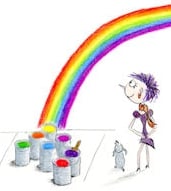 Sensory language #1: Visual words
Sensory language #1: Visual words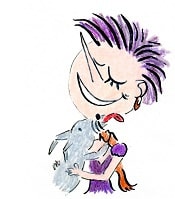 Sensory language #2: Tactile words
Sensory language #2: Tactile words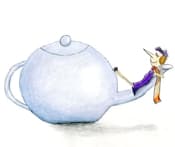 Sensory language #3: Auditory words
Sensory language #3: Auditory words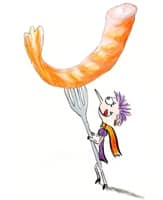 Sensory language #4: Words related to taste and smell
Sensory language #4: Words related to taste and smell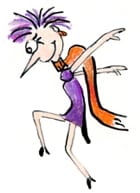 Sensory language #5: Motion words
Sensory language #5: Motion words